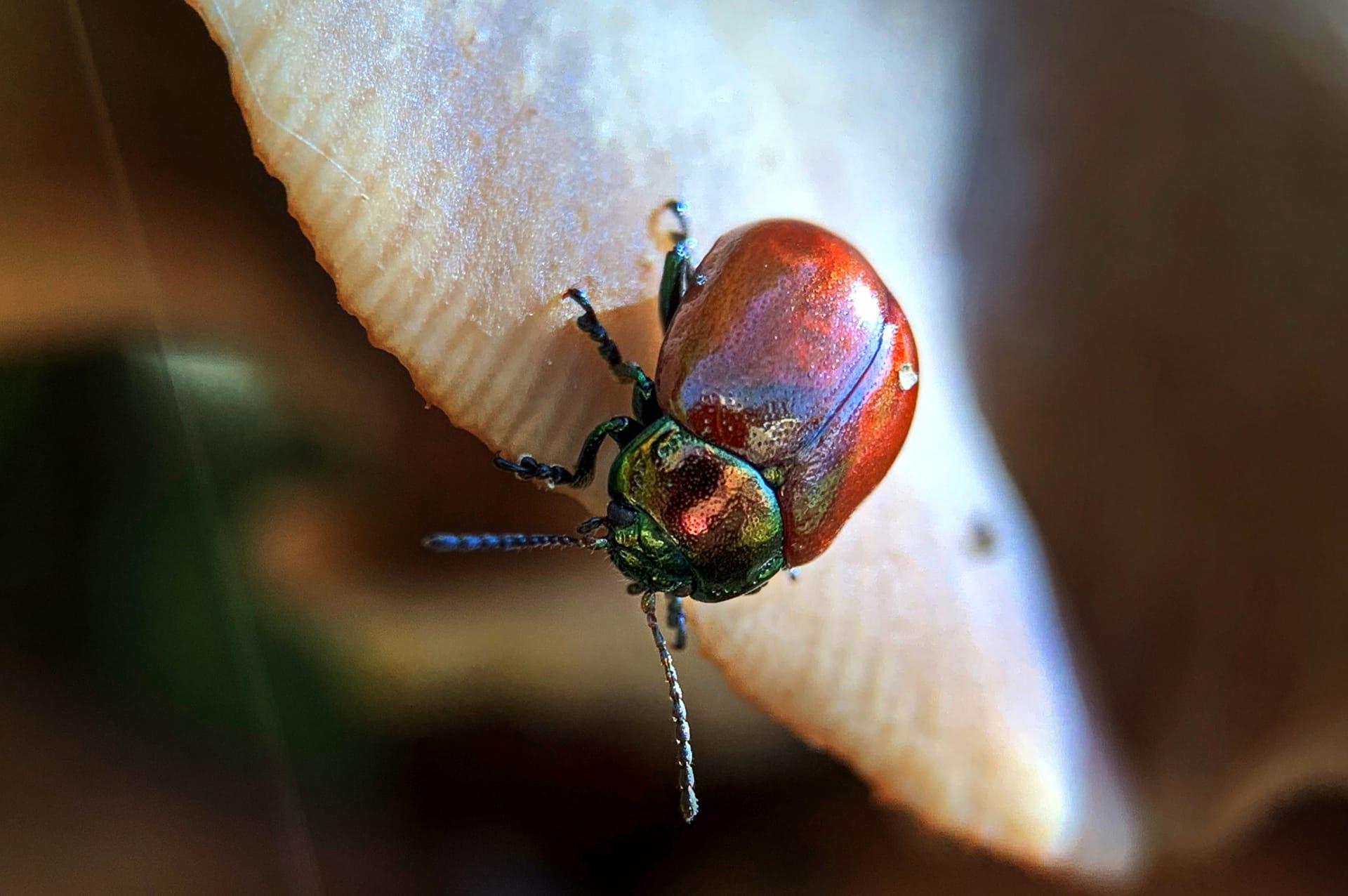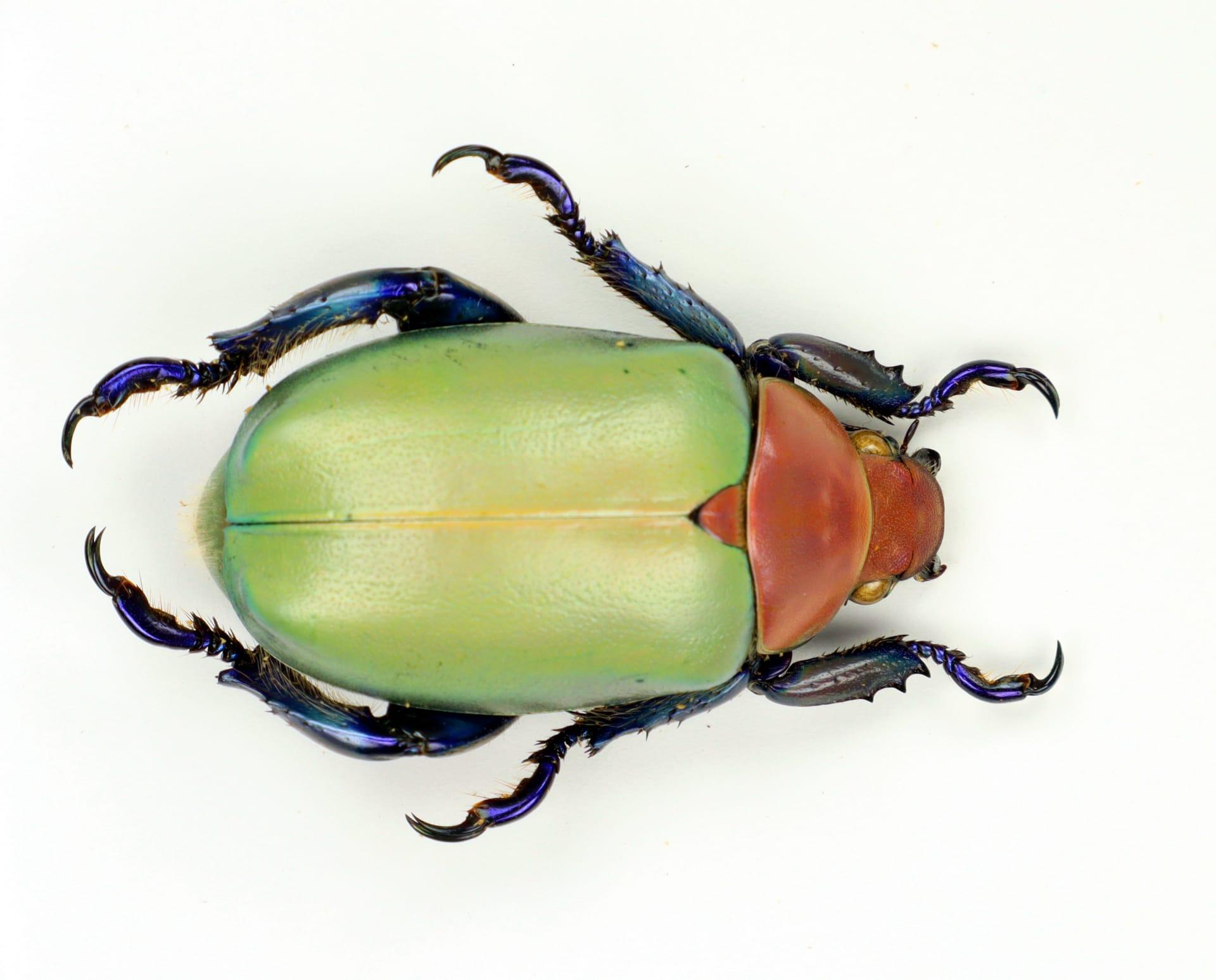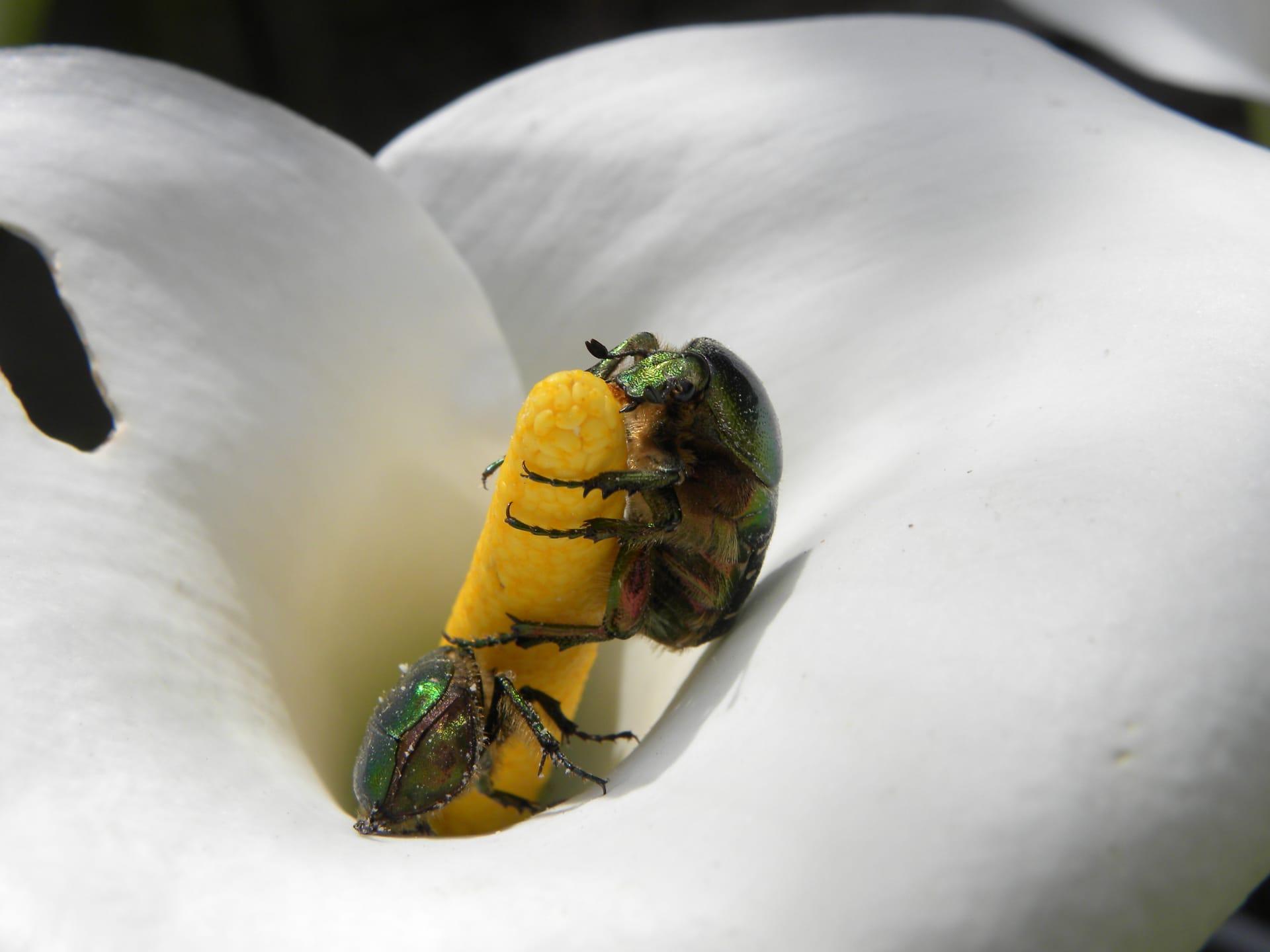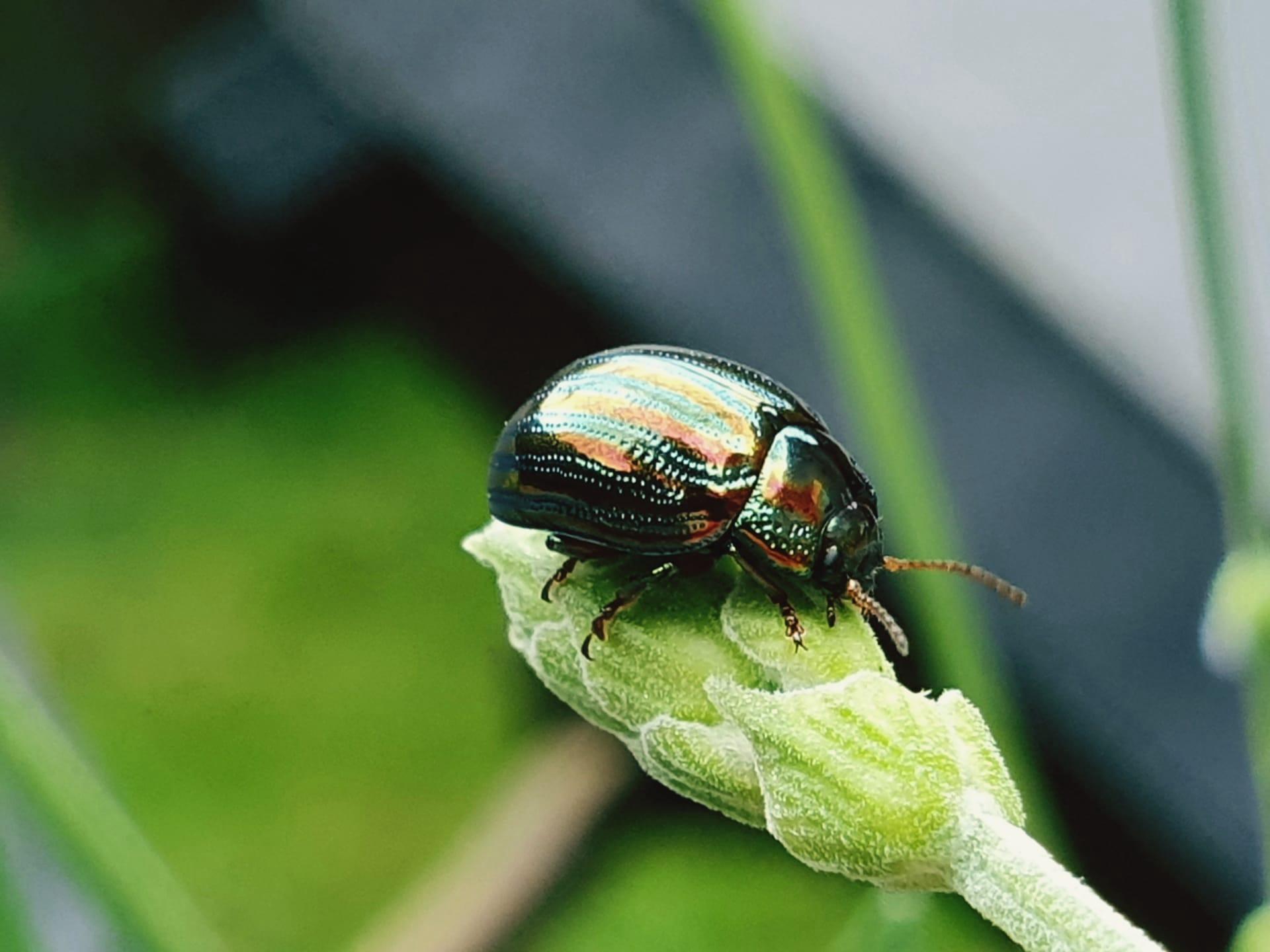Japanese Beetle
- Home /
- Mini Encyclopedia /
- Animal /
- Japanese Beetle
1
The Japanese Beetle, scientifically known as Popillia japonica, belongs to the family Scarabaeidae, which is part of the order Coleoptera, the largest order in the animal kingdom encompassing all beetles. This species is distinguished by its metallic green body and copper-colored wings, with white tufts of hair along the sides and rear of its abdomen. Adult beetles typically measure around 0.6 inches (1.5 cm) in length.
Originally native to Japan, as the name suggests, the Japanese Beetle was first found in the United States in 1916 near Riverton, New Jersey. Since then, it has spread extensively and is now found in most states east of the Mississippi River, as well as in parts of Canada. The beetle thrives in a range of habitats, including gardens, orchards, and fields, making it a versatile and widespread species.

2
Question: Is it true that Japanese Beetles are voracious predators that pose a significant threat to other insects and small animals?
Answer: Contrary to this common misconception, Japanese Beetles are not predators but are actually herbivores. Their diet primarily consists of leaves, flowers, and fruits of over 300 plant species, including roses, grapes, and linden trees. While they do not pose a direct threat to other animals, their feeding habits can cause significant damage to plants, leading to economic losses in agriculture and horticulture.

3
The Japanese Beetle employs a unique survival strategy that involves both communal and solitary behaviors. During the larval stage, which lasts about 10 months, the grubs live underground, feeding on the roots of grasses and other plants. This subterranean lifestyle protects them from many predators. In the adult stage, beetles are known for their swarming behavior, often congregating on a single plant to feed, which can overwhelm the plant's defenses.
Another key survival tactic is their reproductive strategy. Females lay eggs in the soil near plants, ensuring that the emerging grubs have an immediate food source. This prolific reproduction, with a single female laying up to 60 eggs, helps maintain their population despite various natural threats and control measures.

4
In ecosystems, the Japanese Beetle plays a dual role. As a consumer of plant material, it acts as a primary decomposer, aiding in the breakdown and recycling of organic matter. However, its feeding can also lead to defoliation of plants, impacting the ecosystem's balance and the health of plant species.
The beetle's presence significantly influences its ecological relationships. It serves as a food source for various predators, including birds, small mammals, and other insects, thus contributing to the food web. However, its invasive nature and destructive feeding can disrupt local ecosystems, outcompete native species, and lead to a decrease in biodiversity.

5
Film: "The Beetle Invasion" is a documentary released in 2018 by the Canadian Broadcasting Corporation. It explores the spread of the Japanese Beetle in North America, focusing on its impact on agriculture, horticulture, and native ecosystems. The film features interviews with entomologists, farmers, and environmentalists, providing a comprehensive view of the challenges posed by this invasive species.
Book: "Insect Invaders" by Michael Smith, published in the United States in 2020, delves into the world of invasive insects, with a significant focus on the Japanese Beetle. Smith, an entomologist, combines scientific research with case studies to illustrate the ecological and economic impacts of these insects.
Book: "Gardener's Guide to the Japanese Beetle: Control and Prevention" by Laura Green, released in the UK in 2021, is a practical guide for gardeners battling this pest. Green, a renowned horticulturist, offers insights into the beetle's biology and provides effective strategies for managing and preventing infestations in gardens and landscapes.